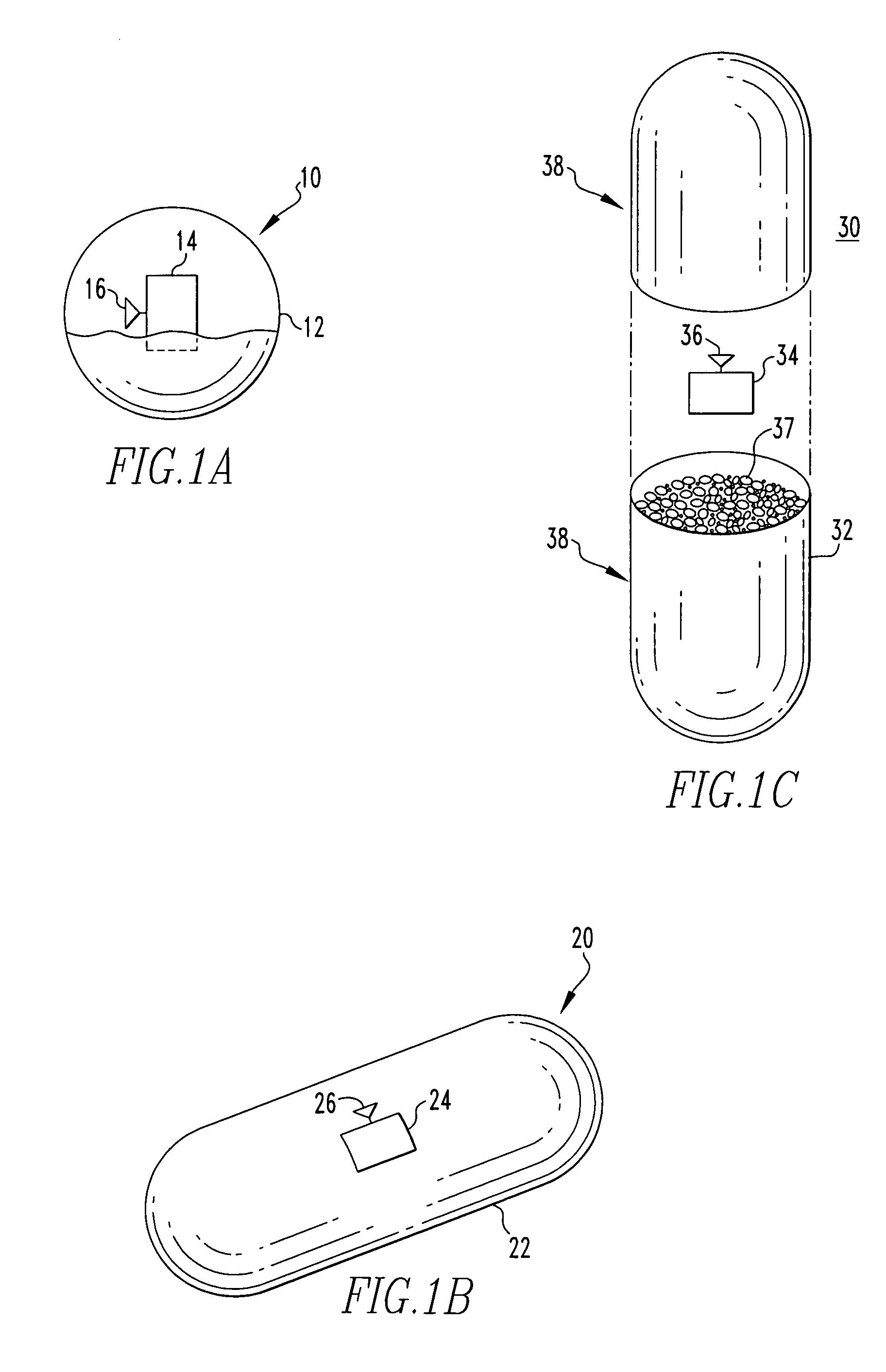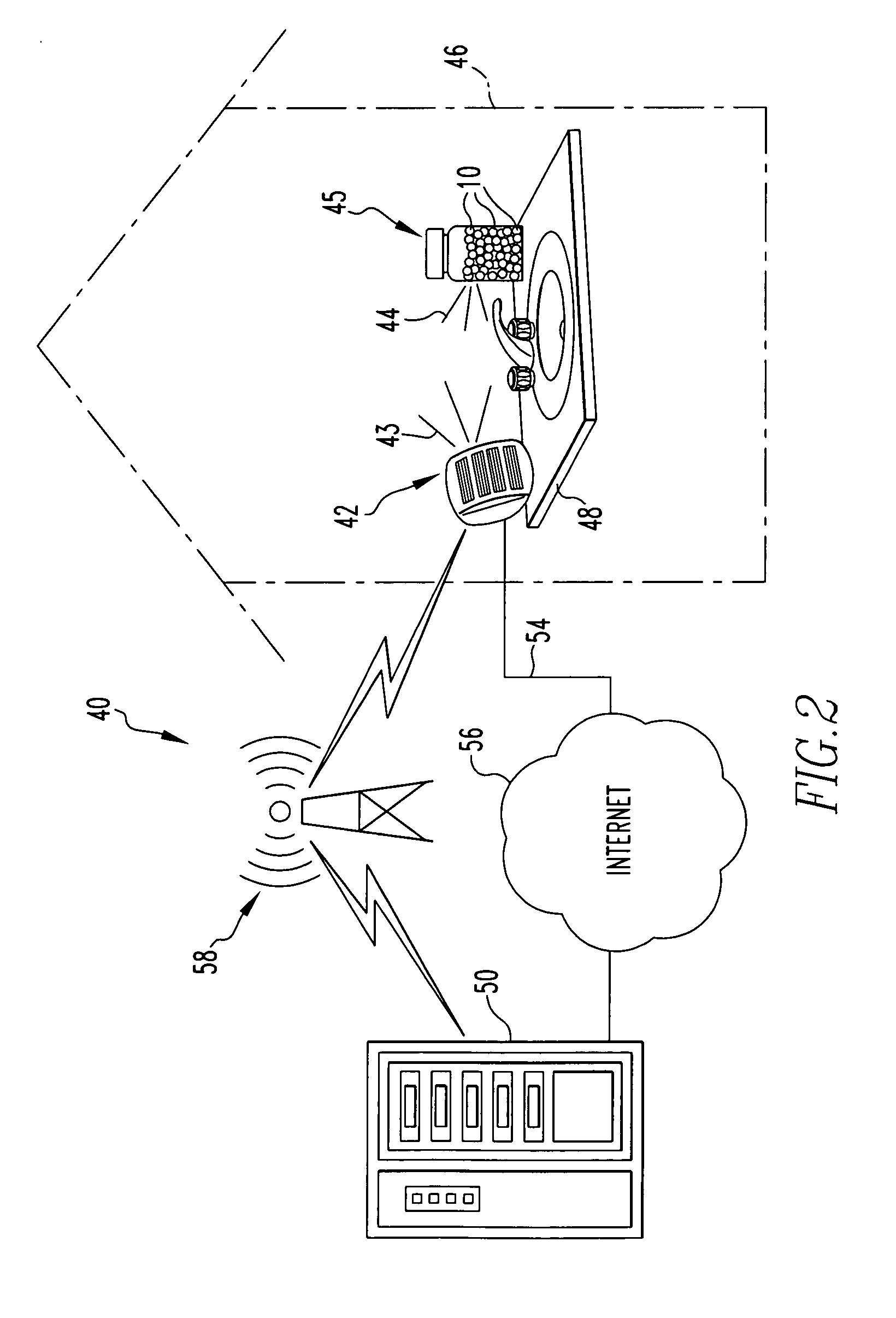Radio frequency identification pharmaceutical tracking system and method
a technology of radio frequency identification and tracking system, applied in the field of pills, can solve the problems of increased hospitalization and mortality, non-adherence to medical therapy, and difficulty in identification of patients who do not adhere to medical therapy, and achieve the effect of improving treatment effectiveness
- Summary
- Abstract
- Description
- Claims
- Application Information
AI Technical Summary
Benefits of technology
Problems solved by technology
Method used
Image
Examples
Embodiment Construction
[0027]The present invention will now be described with reference to the accompanying figures. It is to be understood that the specific system illustrated in the attached figures and described in the following specification is simply an exemplary embodiment of the present invention.
[0028]With reference to FIG. 1a, a first embodiment ingestible dosage form 10 includes a pill 12 having an RF tag 14 embedded therein. Desirably, the RF tag 14 includes an antenna 16 that is in communicative connection with the RF tag 14. As is known in the art, the antenna 16 may be associated with the RF tag 14 in various configurations including, but not limited to, being integrated within the RF tag 14, extending therefrom, or being affixed thereon. It is to be understood that the RF tag 14 is also commonly referred to as an RFID tag or chip and, therefore, the naming convention of the RF tag 14 as such is not to be construed as limiting the invention. Desirably, the pill 12 contains pharmaceutical con...
PUM
 Login to View More
Login to View More Abstract
Description
Claims
Application Information
 Login to View More
Login to View More - R&D
- Intellectual Property
- Life Sciences
- Materials
- Tech Scout
- Unparalleled Data Quality
- Higher Quality Content
- 60% Fewer Hallucinations
Browse by: Latest US Patents, China's latest patents, Technical Efficacy Thesaurus, Application Domain, Technology Topic, Popular Technical Reports.
© 2025 PatSnap. All rights reserved.Legal|Privacy policy|Modern Slavery Act Transparency Statement|Sitemap|About US| Contact US: help@patsnap.com



